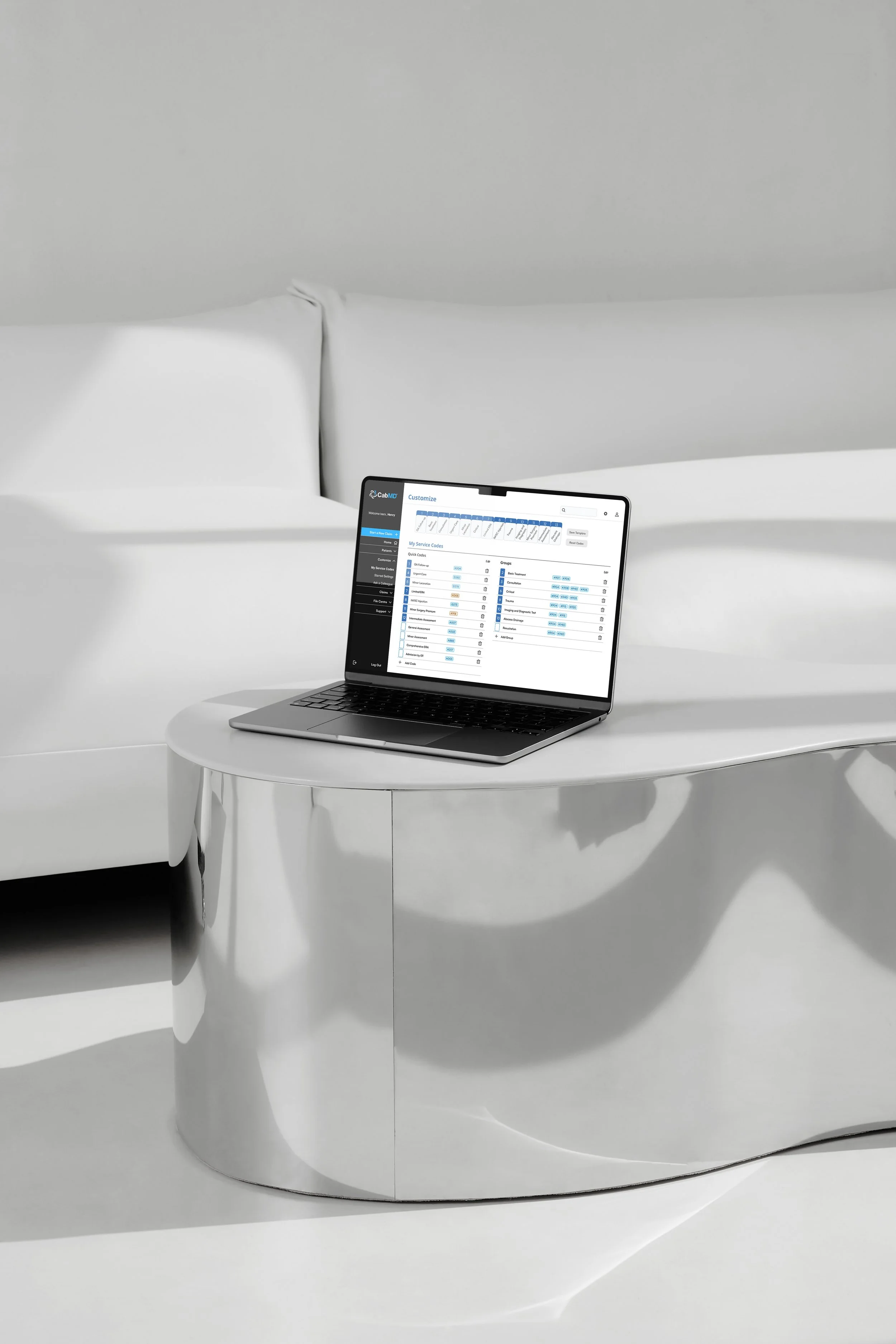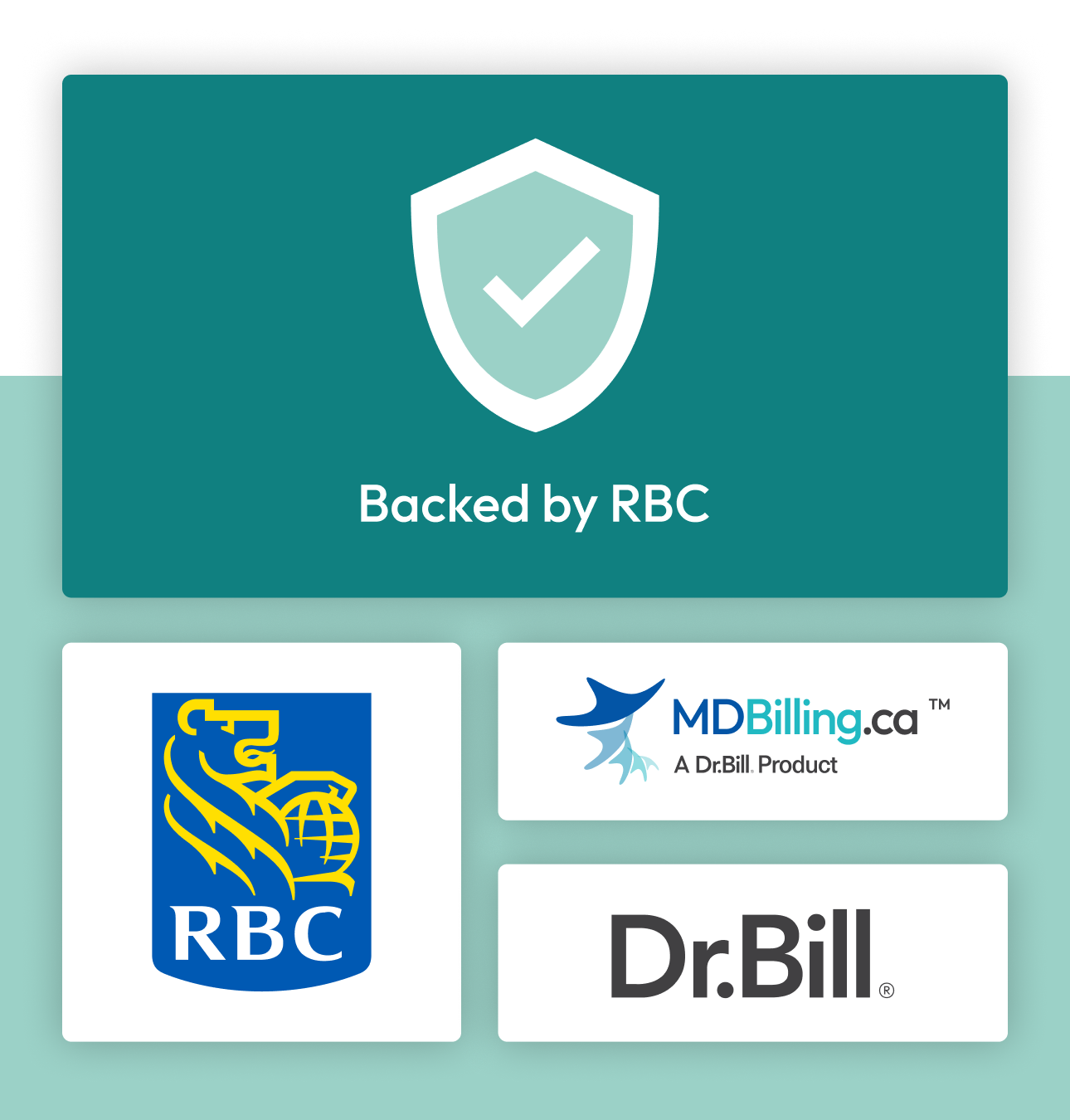
CabMD Redesign
CabMD is a Canadian medical billing platform that physicians use to submit claims to the provincial health system. Unlike in the U.S., most Canadian physicians act as independent contractors and must manage their own billing — a process that directly impacts their income. This project focused on redesigning CabMD’s platform to improve clarity, speed, and efficiency in billing workflows.
Please note: All data shown is fictitious. No patient information was collected during this project.
Project
Independent Case Study
Year
2025
Designer
Evelyn Choi
Contribution
Research
Prototyping
Branding
Usability Testing
(Everything)
Market Landscape
Ontario’s medical billing market has seen major consolidation under RBC, which owns both Dr. Bill and MDBilling, two of the most widely recognized platforms. Backed by a major financial institution, they are able to charge higher subscription fees. Many physicians are forced to pay because these platforms are more efficient, saving them time and money.
CabMD is one of the few remaining independent billing platforms competing in this market. While it markets itself as “simple and easy to use,” user feedback tells a different story: physicians face steep learning curves, unintuitive navigation, and excessive manual input. Many choose CabMD primarily for its lower flat rate pricing, but end up frustrated by inefficiency, spending much longer to complete billing tasks compared to competitors.
Challenges for Physicians
Through interviews with physicians who actively either CabMD or MDBilling, clear differences emerged that highlight where CabMD falls short. Competitive analysis was not just about features, but about how each platform impacts real physician workflows.
CabMD requires billing each patient one by one, day by day. This can work reasonably well for physicians with fewer patients but creates heavy manual input for high-volume specialties.
MDBilling allows physicians to manage billing across both days and patients at once. With options to prep and automate details in advance, claims can often be submitted with a single click, reducing repetitive typing and saving significant time.
CabMD users often batch their billing and submit it all at once, a process that takes 1–2 hours each time.
MDBilling users typically submit claims daily or every few days, which only takes about 15–20 minutes.
96%
of physicians in Canada receiving some portion of their income if not all through fee-for-service (Canadian Medical Association, 2025).
4X
the time it takes for CabMD users to submit billing vs physicians using competitor billing software.
3/5
physicians in the interview panel had a negative preconceived perception of CabMD.
Interviews with users revealed that it takes significantly longer for CabMD users to complete tasks compared to those using competitor software. Physicians often stick with familiar software, finding the effort to learn a new system too cumbersome, even if it costs more.
Main user pain points:
Steep learning curve with no clear guidance or support resources
Excessive manual data input for patient info and billing codes
Unintuitive navigation
CabMD may need to differentiate themselves by focusing on improving user experience and streamlining workflows.
“Adding new patients is the most tedious part of billing”
“Having a way to populate the patients more efficiently would be really nice. ”
“The whole process is very repetitive and it’s just a matter of time. I’ll put it off doing it for a while and then I have to go and do a whole bunch at once and spend an hour or two just doing data entry.”
“I’m billing the same thing every Monday for the same patients, but I have to enter it all manually each time. ”
Stepping into the User Flow
Adding patients through the app - a necessary step for all physicians
This is a preparation stage for physicians in Canada as every patient has an health plan number which is scanned and brought into the app which then is accessible on the software to bill on their computer.
Complete billing and submit claim






